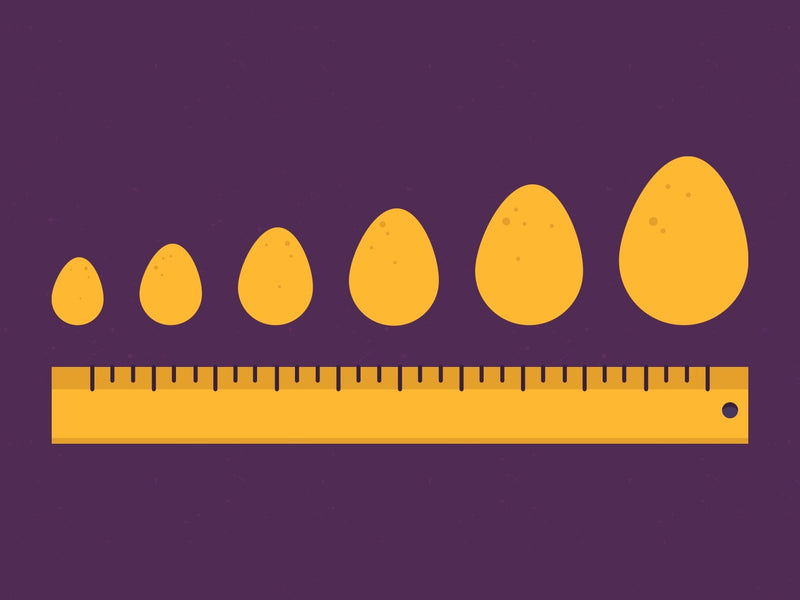
Next time you're at the grocery store, look closely at the cartons in the egg aisle.
If you hadn't already noticed, you'll see that eggs come in many different sizes—not just large! Many people think that eggs are packaged according to physical size, but in reality, it's all about weight rather than volume. If you've ever wonderered how egg sizes are decided, who regulates egg sizes in the United States, or why some hens lay medium eggs while others lay jumbo eggs, it's time to get your questions answered!
How are egg sizes decided?
The United States Department of Agriculture, also known as the USDA, is the authority on sizes for eggs sold in the US. The USDA measures egg sizes by weight per dozen, not by the dimensions or visual size of an egg. If you've ever noticed that some of the eggs in your carton look larger or smaller than the others, it's because what ultimately matters, according to the USDA, is the total weight of the dozen eggs in the carton.
What are the official egg sizes?
The USDA recognizes six weight classes for shelled chicken eggs. These weight classes include peewee, small, medium, large, extra-large, and jumbo. Each weight class has its own minimum weight requirement:
- Peewee eggs must be a minimum of 15 ounces per dozen.
- Small eggs must be a minimum of 18 ounces per dozen.
- Medium eggs must be a minimum of 21 ounces per dozen.
- Large eggs must be a minimum of 24 ounces per dozen.
- Extra-large eggs must be a minimum of 27 ounces per dozen.
- Jumbo eggs must be a minimum of 30 ounces per dozen.
Why are the eggs in my carton larger than normal?
The USDA permits the packing of any weight class of eggs into packaging marked for the next smaller size. This means that large eggs can be packed into cartons marked for medium eggs, and extra-large eggs can be packed into cartons marked for large eggs. However, the larger eggs cannot be "intermingled in the same carton with the lower marked weight class," which means that the entire carton must contain eggs of the same weight class. If you've ever purchased a carton of large eggs and found that they were all bigger and heavier than expected, now you know why!
Why are eggs different sizes?
There are many factors that can influence the size of a hen's egg, including her age, breed, and the time of year.
- Hen age: When hens are still learning how to lay, they often produce eggs that fall into the peewee and small weight classes. However, young hens have also been known to lay jumbo eggs (sometimes with double yolks!). When hens are in the prime of their laying days, they usually produce medium and large eggs.
- Hen breed: Some hens are bred to lay larger eggs, while other breeds tend to lay very small eggs. In general, the larger the hen's body, the larger the eggs she'll lay.
- Time of year: When the weather cools down and the days get shorter, a hen's production naturally slows. During the coldest months of winter, her eggs may be slightly smaller than usual.
How does Nellie's weigh and pack eggs?
Weighing and packing our free range eggs to USDA standards requires precision. Every morning, our scales are checked and calibrated for each USDA egg weight class, and this entire process is documented. Next, we determine which weight classes will be packaged in which areas of our packing facility, and our system is programmed to run certain weight classes to their respective pack lines. This system is computerized and prohibits eggs in a certain weight class to be packaged in the wrong cartons. This also allows us to easily track the total weight of all eggs run through a particular pack line during the day, which means we can verify that the average weight of any given egg class during that day was within USDA parameters. Computers don't do all the work, though! We always have personnel monitoring the packing line and manually documenting weights of filled cartons, which is yet another way to ensure that our cartons are up to sizing standards every time they leave our facility on the way to your local grocery store.









